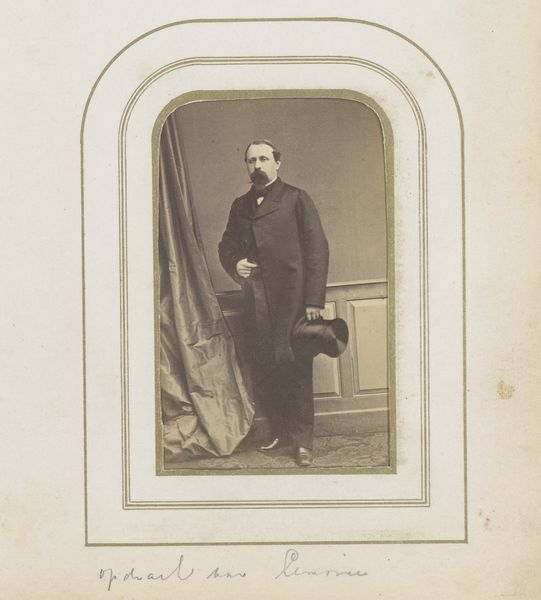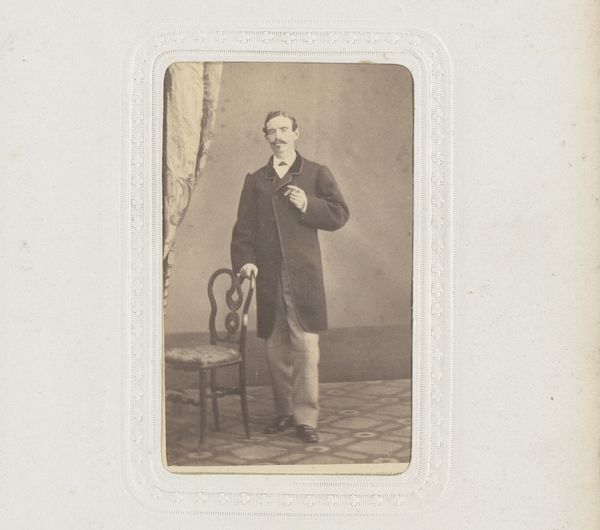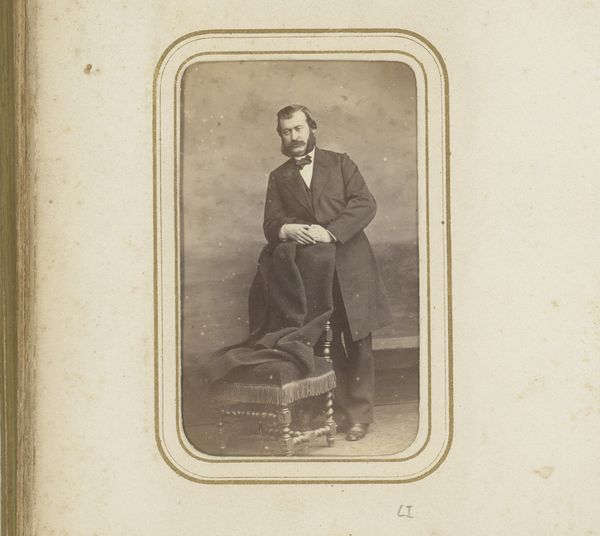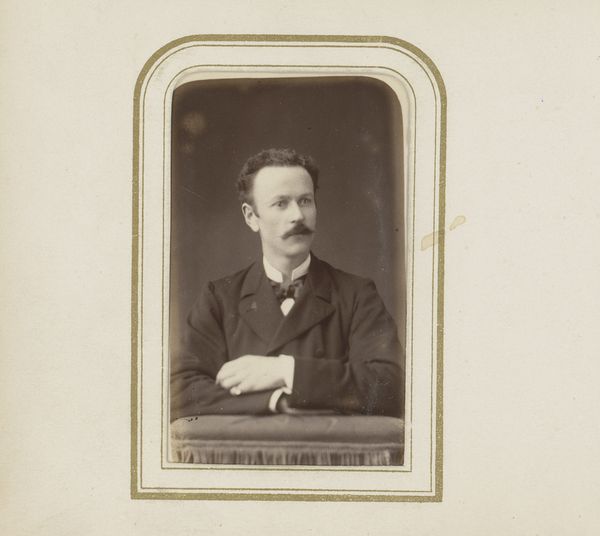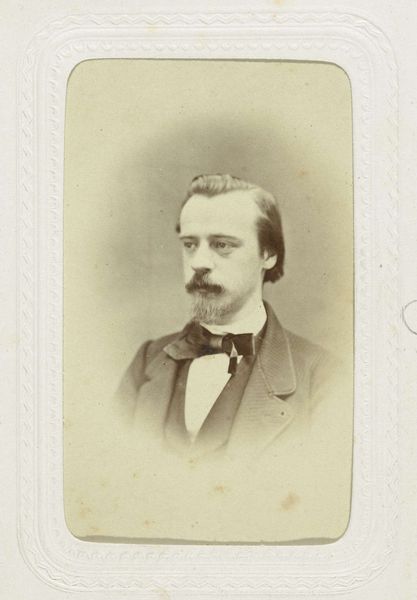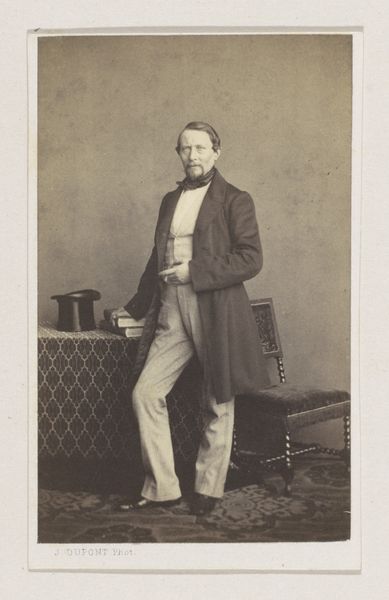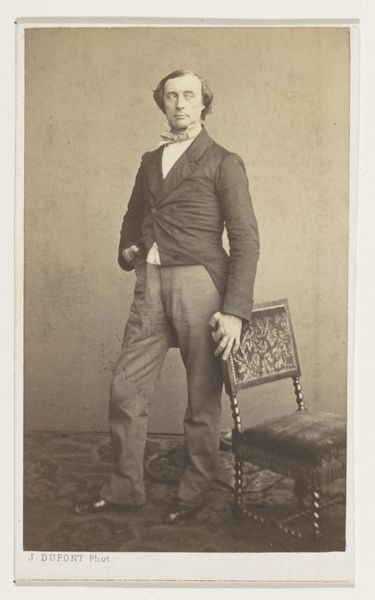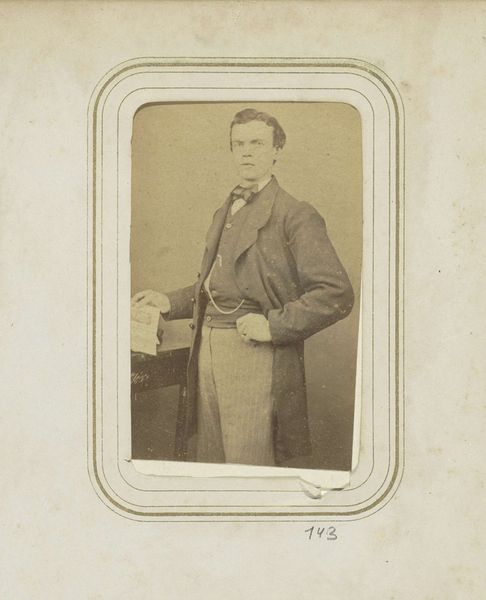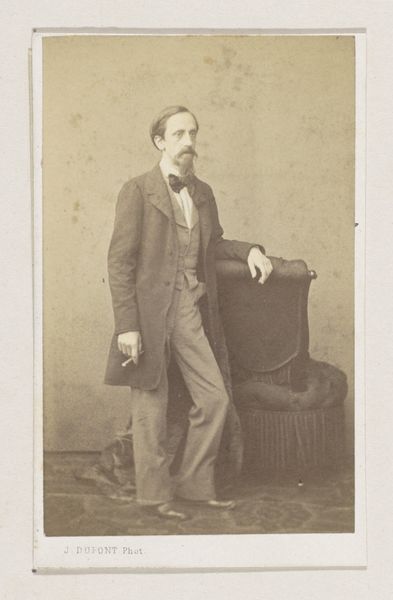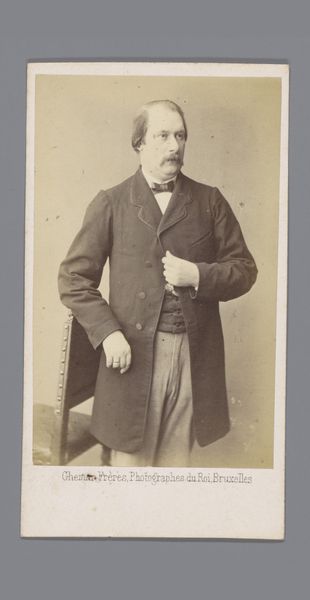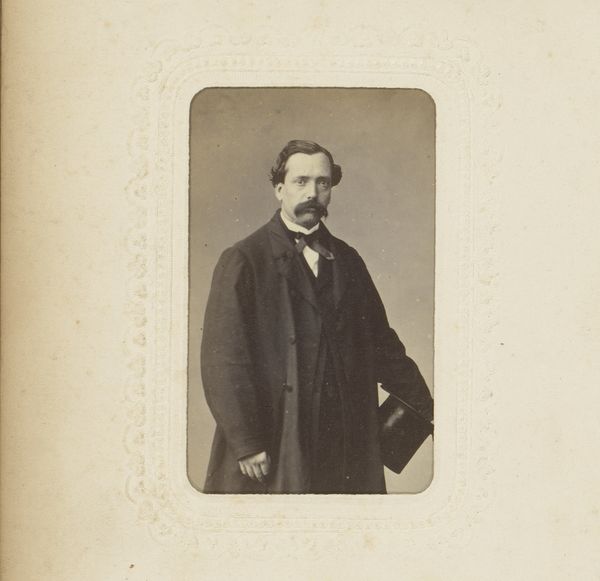
Dimensions: height 87 mm, width 53 mm
Copyright: Rijks Museum: Open Domain
Editor: So, this is "Portrait of a Standing Man with Moustache," taken between 1850 and 1885 by Moriz Ludwig Winter, using the daguerreotype technique. It's striking how direct the man’s gaze is. What kind of symbolism might have been in play during this time? Curator: This direct gaze is typical. Early photography was a deliberate act, demanding a poised and confident presentation. The moustache is important; during this period, it symbolized masculinity and strength. How do you think the walking stick plays into this narrative? Editor: It looks like a signifier of status, of someone with leisure. Curator: Precisely. It's a key visual element. Consider how photography was initially seen—a way to immortalize oneself, similar to commissioning a painted portrait, but faster and more "objective." Therefore, the symbols chosen were carefully considered reflections of societal ideals. The subject clearly wanted to present an ideal. Look at his confident pose and expensively tailored coat and vest. It isn't so different than the role images play for us today on Instagram and TikTok, wouldn't you agree? Editor: I never thought about it that way! It's all about constructing an identity, performing an ideal self. Curator: Exactly! And like now, photography aimed to capture the “essence” or an important element. Editor: So, beyond just being a historical record, this photo encapsulates the social and cultural aspirations of its time. That’s incredible! Curator: Indeed, it demonstrates the remarkable staying power of images to communicate aspiration.
Comments
No comments
Be the first to comment and join the conversation on the ultimate creative platform.
